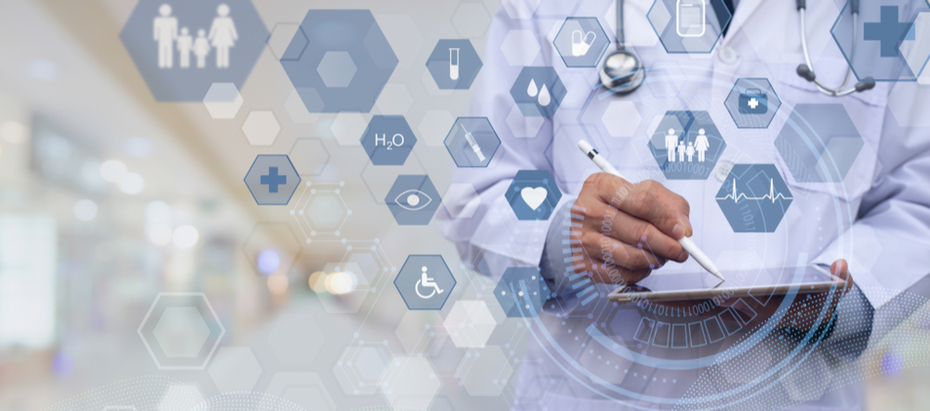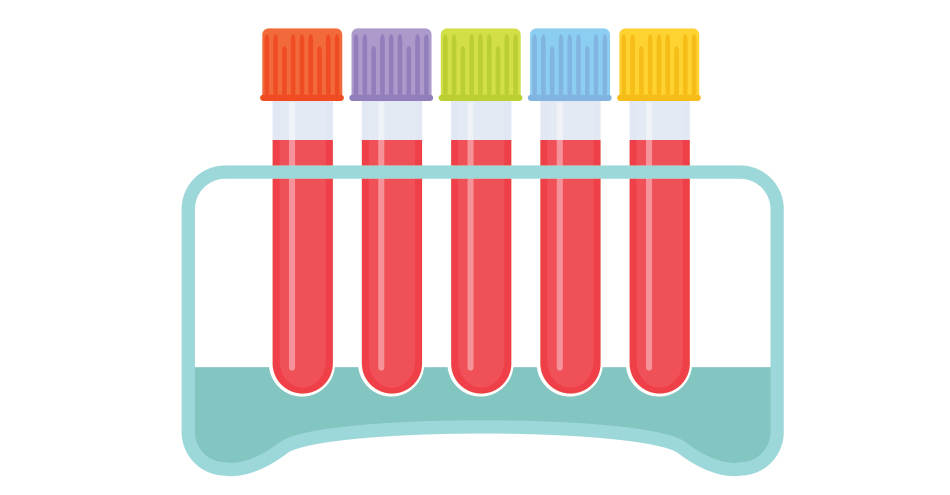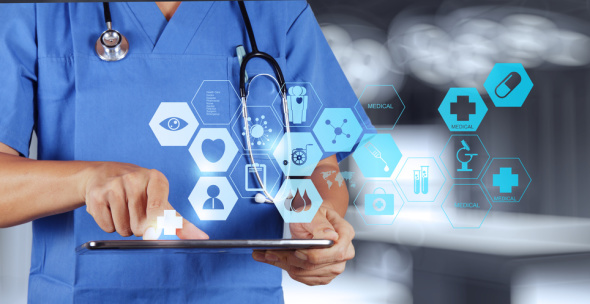We live in a digital age: never before has our society been so connected. The opportunities of current technological and digital developments seem endless. However, at the same time, it still doesn’t seem like this level of digitalisation is widely spread in the healthcare industry for the public to see. At least, not until COVID-19. During the “intelligent lock-down” I had my first-ever digital consult with my GP. Although this technological service is not novel, why was it the first time I encountered it? For me, this digital consultation was more efficient. Wouldn’t it be more efficient for my GP as well: to serve more patients whilst offering the same level of quality? When is it the turn for E-Health to take off?
What is E-Health?
Let’s first start with the meaning of E-Health. Researchers have tried to create a general consensus on the definition of E-health; however, this has proven to be difficult since the term is popular and widely used in various different applications (Oh et al. 2005; Showell & Nøhr 2012). For the sake of this article, E-Health can be viewed as any digital application that supports and aims to improve health and healthcare. E-Health can be anything: from a mobile app that a patient uses to collect and send data on bodily functions (e.g. glucose monitoring), to a secure E-Health platform that healthcare professionals use to get insight into medical records. According to the website of the Dutch government, E-Health should also serve to give a patient more control over his or her health (Government of the Netherlands 2020). Examples of successful applications of E-Health can be fewer physical visits to the hospital or earlier identification of chronic diseases.
What are the technologies behind E-Health?
E-Health is made possible through the Internet of Things (IoT) technologies. The term IoT was coined to refer to a network of objects that are able to interact with each other. These connections can be between: (i) persons to persons, (ii) persons to things (or machines), and (iii) things to things, made possible through smart networking technologies (Patel & Patel 2016). IoT within the healthcare industry has great potential and is already gaining threshold. For this reason, the term Internet of Medical Things (IoMT) got introduced. IoMT refers to the increased interconnectivity of medical-related devices and services, made possible through digitisation and network technologies (Taylor et al. 2018).
IoMT has already made it possible for patients wearing a smartwatch, to collect data and to track their wellness. This data is can then be seamlessly integrated into an electronic health record for the doctor to monitor remotely in real-time. Today, IoMT is improving access to quality care and reducing costs by tracking equipment, patients and staff, plus much more (Taylor et al. 2018). We’ve just begun to scratch the surface of all the possibilities.

How can we get E-Health to take off in the Netherlands?
One of the great upsides of digitisation in the healthcare industry is that high-quality healthcare can be delivered more efficiently to patients. During the intelligent lock-down, caused by the corona crisis, many E-Health initiatives were rolled out faster than planned. However, healthcare givers are falling back into their old patterns and are relying on their traditional systems and procedures again (BNR 2020). How can we make sure that digitisation in our healthcare system continues?
1. Educating patients and caregivers
Digitisation in the healthcare industry will require a transformation in how healthcare is viewed by both patients and healthcare professionals. On the one hand, digital innovations can still seem daunting for patients. Especially for the elderly, it will be essential that digital devices and/or services are easy to use. Education and training might play an important role in removing the fear of change. On the other hand, E-Health should also be fully embraced by caregivers in order for it to succeed. After all, disruption will not take off if digital innovations are not fully supported by healthcare personnel. For this to happen, it’s important to educate healthcare professionals (perhaps even early on), with the capabilities (and of course also the pitfalls) of digital technologies.
2. Ecosystem orchestration: finding a way for different stakeholders to work together
IoMT enables new players to enter the healthcare domain. From manufacturers of surgical robots to commercial tech companies that provide wearable health watches. It’s essential that all players in the IoMT ecosystem should find ways to collaborate to support the changing face of medicine.
The reason why this is challenging is that healthcare models and institutions are very bureaucratic, and often, differ significantly per country. To be able to provide a mixed form of care, partly digital and partly physical, the structure of these bureaucratic systems has to change. And this is not an easy task.
3. Matter of time?
To be able to steer the healthcare industry in the right direction, the conditions for innovation must be there. In other words, is there enough time and money for E-Health initiatives to materialise? And if so, is it just a matter of time?
Even though much has already happened in the field of E-Health, it’s important to continue further digitisation that the corona crisis has induced. It’s now time to press ahead.
What’s your opinion on E-Health? Is now the time to push through with the digitisation of the health industry? What are the challenges the sector needs to overcome? What are the downsides of E-Health?
Please leave your thoughts in the comment box below!
References
BNR. (2020). Vooruitgang digitalisering in de zorg loopt terug. [online] Available at: https://www.bnr.nl/nieuws/gezondheid/10418179/vooruitgang-digitalisering-in-de-zorg-loopt-terug [Accessed 28 Sep. 2020].
Government of the Netherlands. (2020). Government encouraging use of eHealth. [online] Available at: https://www.government.nl/topics/ehealth/government-encouraging-use-of-ehealth [Accessed 27 Sep. 2020].
Oh, H., Jadad, A., Rizo, C., Enkin, M., Powell, J. and Pagliari, C. (2005). What Is eHealth (3): A Systematic Review of Published Definitions. Journal of Medical Internet Research, 7(1).
Patel, K. and Patel, S. (2016). Internet of Things-IOT: Definition, Characteristics, Architecture, Enabling Technologies, Application & Future Challenges. International journal of engineering science and computing, 6(5).
Showell, C. and Nøhr, C. (2012). How should we define eHealth, and does the definition matter? Studies in Health Technology and Informatics, 180, pp.881–884.
Taylor, K., Steedman, M., Sanghera, A. and Thaxter, M. (2018). Medtech and the Internet of Medical Things. [online] Deloitte Centre for Health Solutions. Available at: https://www2.deloitte.com/content/dam/Deloitte/global/Documents/Life-Sciences-Health-Care/gx-lshc-medtech-iomt-brochure.pdf.





